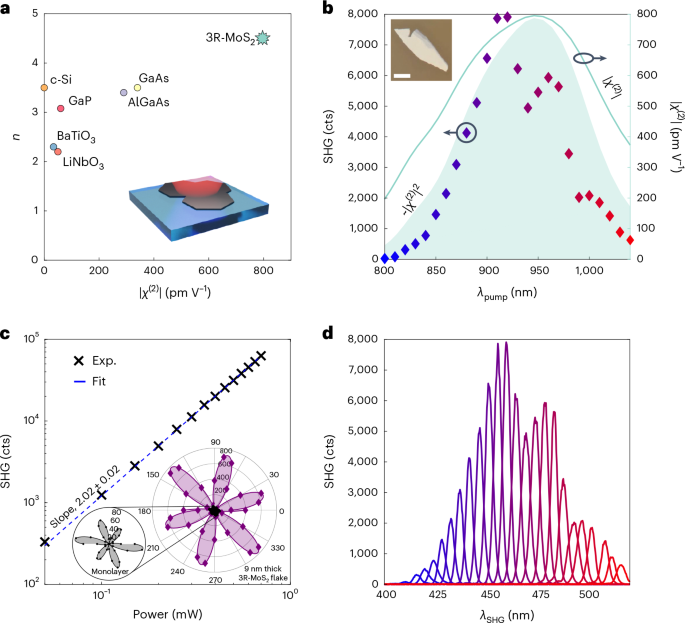2024-09-11 チャルマース工科大学
<関連情報>
- https://news.cision.com/chalmers/r/unique-nanodisk-pushing-photonic-research-forward,c4033710
- https://www.nature.com/articles/s41566-024-01444-9
共鳴遷移金属双晶ナノディスクにおける高効率性と非線形性の組み合わせ Combining ultrahigh index with exceptional nonlinearity in resonant transition metal dichalcogenide nanodisks
George Zograf,Alexander Yu. Polyakov,Maria Bancerek,Tomasz J. Antosiewicz,Betül Küçüköz & Timur O. Shegai
Nature Photonics Published:13 June 2024
DOI:https://doi.org/10.1038/s41566-024-01444-9

Abstract
Second-order nonlinearity in solids gives rise to a plethora of unique physical phenomena ranging from piezoelectricity and optical rectification to optical parametric amplification, spontaneous parametric down-conversion and the generation of entangled photon pairs. Monolayer transition metal dichalcogenides, such as MoS2, exhibit one of the highest known second-order nonlinear coefficients. However, the monolayer nature of these materials prevents the fabrication of resonant objects exclusively from the material itself, necessitating the use of external structures to achieve the optical enhancement of nonlinear processes. Here we exploit the 3R phase of a molybdenum disulfide multilayer for resonant nonlinear nanophotonics. The lack of inversion symmetry—even in the bulk of the material—provides a combination of massive second-order susceptibility, extremely high and anisotropic refractive index in the near-infrared region (n > 4.5) and low absorption losses, making 3R-MoS2 highly attractive for nonlinear nanophotonics. We demonstrate this by fabricating 3R-MoS2 nanodisks of various radii, which support resonant anapole states, and observing substantial (>100-fold) enhancement of second-harmonic generation in a single resonant nanodisk compared with an unpatterned flake of the same thickness. The enhancement is maximized at the spectral overlap between the anapole state of the disk and the material resonance of the second-order susceptibility. Our approach unveils a powerful tool for enhancing the entire spectrum of optical second-order nonlinear processes in nanostructured van der Waals materials, thereby paving the way for nonlinear and quantum high-index transition metal dichalcogenide nanophotonics.



